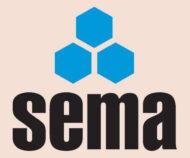Our first question this month asks if a Load Notice is needed on Shelving and our second enquires about racking end protection.
 Load Notice for Shelving
Load Notice for Shelving
Q. It has been mentioned to me that we should have ‘Load Notices’ on some ‘shelving’ that we have in our stores area, and everything I have read only talks about ‘Racking’
This is shelving definitely NOT racking, and would have been bought from a competent manufacturer. This has been in the company for years and I am unlikely to be able to find out from where we purchased it. It is well-constructed and formed from welded box-section, with the shelves made from ¾ plywood. This is basically a ‘transit store’ and nothing ‘heavy’ is ever placed on it, and the SWL is never likely to be exceeded. I contacted another shelving manufacturer and they just said, use the load-bearing capacity of the wood.
So my question is, if you can help please, do I actually need a Load Notice for shelving or is it like it appears, just a requirement for racking?
A. Most of the published information is written about racking however, the relevant legislation is the Provision and Use of Work Equipment Regulations (PUWER) and both Racking and Shelving are considered to be work equipment and, therefore, fall under PUWER.
PUWER requires, amongst other things;
•That the equipment should be inspected and maintained in good working condition,
•That people operating work equipment are given adequate training in the correct use of the equipment,
•That employees are given necessary health and safety information.
The load notice does not just give information about the Safe Working Load (SWL) of the racking/shelving, there are also important instructions and information about the general usage of the racking/shelving e.g. prohibitions about altering or climbing the equipment as well as an instruction to report damage and signposts to information sources.
Paragraph 634 of the HSE publication “Warehousing and storage – A guide to health and safety” HSG76 states that “Racking should have a clear unambiguous notice securely fixed to it, stating the maximum load together with any necessary specified load configurations”, and goes on to make reference to the SEMA publication on Load Notices.
The Load Notice is the easiest way for the employer to provide employees with the information necessary to operate the system safely.
If the racking/shelving does not have a load notice, then the employer would need to find an alternative means of transmitting information with respect to correct usage to their employees.
The best way to determine the safe working load (SWL) data for racking or shelving is from the racking/shelving supplier. The load capacity of pallet racking and shelving is normally determined by the manufacturer using a combination of structural theory, codes of practice and component testing. This is a skilled task and is normally carried out by the product manufacturer.
Racking/shelving products are made by a wide range of manufacturers however, some may no longer be trading and some have merged with other companies.
If the racking/shelving is from a manufacturer that is still trading then they, or their agents, should be able to provide load data, although this might not always be the case for older discontinued products. Racking and shelving suppliers will often require that they carry out an inspection of the racking/shelving to make sure that it is actually the correct product, that the condition is acceptable and that it has been installed correctly; this service will likely be chargeable.
If the racking/shelving manufacturer is no longer trading or cannot provide load data then it might be possible to get load data from a SEMA Approved Rack Inspector or from a storage equipment Consultant. Unfortunately, the construction that you describe does not sound like a normal commercially available shelving product and might have been custom made; if this is the case then it will likely prove very difficult to obtain loading information from the original source.
There are some Consultants who might be able to derive load data as the original manufacturer would have done. This will be a chargeable service, the cost of which might well exceed the cost of replacing the shelving.
There is a Load notice video on the SEMA website giving some more information.
Racking End Protection
Q. We have end protection with a height of 400, 450 and 550 are there any regulations on which height to choose as you can get protectors up to 800 and 1200mm.
We just wish to protect standard pallet racking – what does the SEMA code of practice say to height?
A. The SEMA Code of practice for the design and use of rack protection recommends that upright protectors should be at least 300mm high, although in some nations, e.g. Germany, this minimum height is 400mm.
The choice of height for the protector will be influenced by the risk assessment for your operation so, whilst a minimum height is recommended in the SEMA code, your particular operation might require something different – hence the reason that other alternatives are commercially available.
SEMA runs a one-day safety course on Rack Safety Awareness and Inspection. These courses are aimed at end users, giving an in-depth look at the need for inspections, how to conduct an assessment and what actions to take when this is completed.
SEMA Approved Rack Inspectors Qualification is aimed at professionals who conduct rack surveys as an integral and significant part of their duties.
SEMA has 26 publications in stock – Codes of Practice, ‘Guides’ and European documents – available to purchase online.
SEMA




Comments are closed.